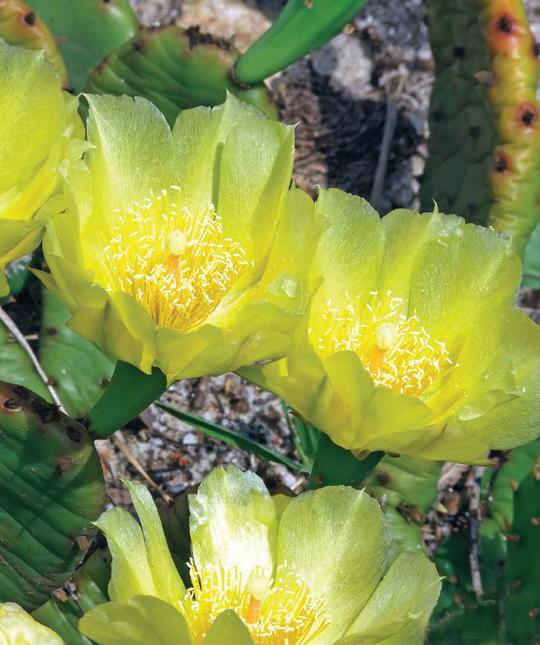
4 minute read
Get to know the plants of Mission Botanica
Eleven to Look for
Mission Botanica lets visitors discover exciting native plants and trees, with a fun twist.
By Ethan Johnson, Plant Records Curator
Visitors looking for adventure won’t want to miss Mission Botanica. This life-sized interactive maze exhibit starts with the spin of a mission wheel, which eventually leads guests to nearly a dozen native plants and trees throughout the arboretum. Questions throughout the mission help participants decide which way to go to get to the next plant. The maze is open rain or shine. Here’s a look at the plants you’ll discover on your mission.
OPUNTIA CESPITOSA – EASTERN PRICKLY-PEAR CACTUS
In Ohio: Oak Openings in Northwest Ohio, including Kitty Todd Nature Preserve and the metropark outside Toledo. In southern Ohio, Opuntia is in the sandy springs area of Adams County along the Ohio River, as well as other rocky, sandy areas in the vicinity. At HF&G: Myrtle S. Holden Wildflower Garden south side sand dune area. Note: these are Opuntia humifusa with all yellow flowers. Opuntia cespitosa has yellow flowers with red centers Bloom time: Usually mid to late June at Holden. Growing tips: Sharp drainage and full sun are best.
SILENE REGIA – ROYAL CATCHFLY
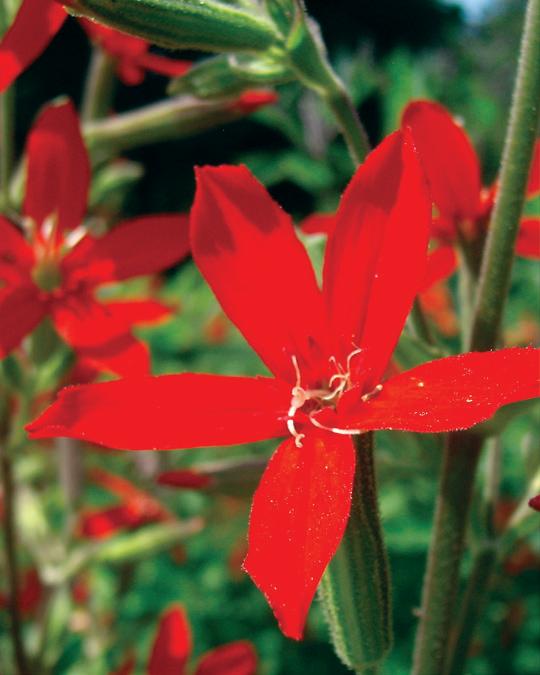
In Ohio: Prairies of Southwest Ohio. At HF&G: Arlene & Arthur S. Holden, Jr. Butterfly Garden; Wildflower Garden, south end, and Prairie Garden. Bloom time: July-August, usually mid to late July to mid to late August at Holden Arboretum. Growing tips: Best in full sun with other prairie flowers and grasses.
VACCINIUM CORYMBOSUM – HIGHBUSH BLUEBERRY
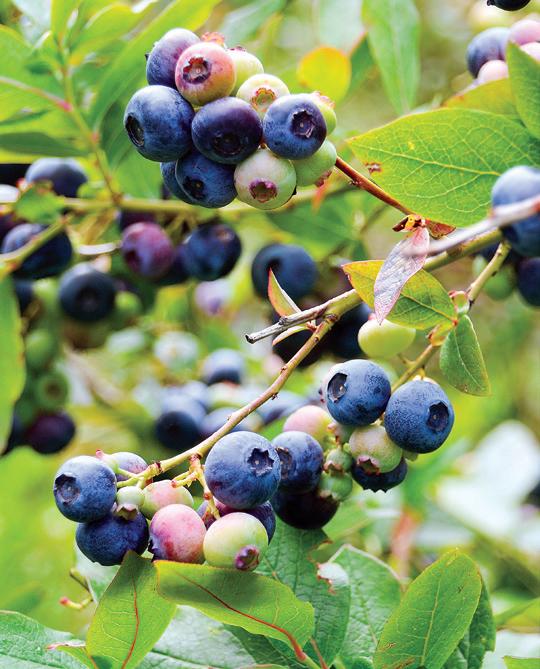
In Ohio: Northeastern Ohio in wetlands or along watercourses. Also in dry oak woods. At HF&G: Blueberry Pond, Wildflower Garden, Rhododendron Discovery Garden. Bloom time: April-May, usually mid to late April through early May. Growing tips: Requires acid soil — add sulfur if pH is near neutral. If young cultivars are purchased, remove the flowers for the first two years so the plants can get better established.
SASSAFRAS ALBIDUM – SASSAFRAS
In Ohio: Throughout, common in eastern Ohio woodlands, fence rows, old fields and forms thickets. At HF&G: Cleveland Botanical Garden, Western Reserve Herb Society Herb Garden, Culinary, also in Woodland Garden; Holden Arboretum, Wildflower Garden, Layer Rhododendron Garden. Bloom time: Usually mid to late April, can last into the first week of May. Growing tips: Very sensitive to disturbance and unavailable in the nursery trade. Best grown from seed in its desired location, or preserve bird-planted ones.
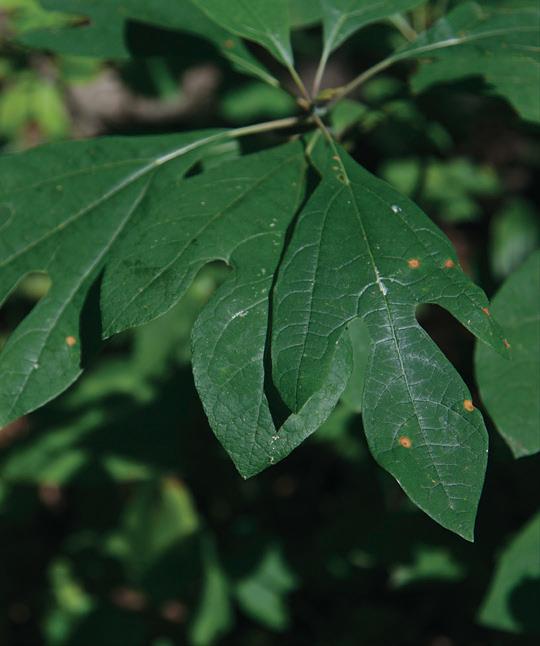
SANGUINARIA CANADENSIS – BLOODROOT
In Ohio: Throughout given woodlands with rich soils. At HF&G: Cleveland Botanical Garden, Western Reserve Herb Society Herb Garden, medicinal and dye, also in Woodland Garden, Hershey Children’s Garden, Evans Restorative Garden; Holden Arboretum, Wildflower Garden, Rhododendron Garden Bloom time: Usually mid to late April until early to mid May. Bloomed late March in 2012. Growing tips: Spring plant, enrich soil and mulch with leaf humus.
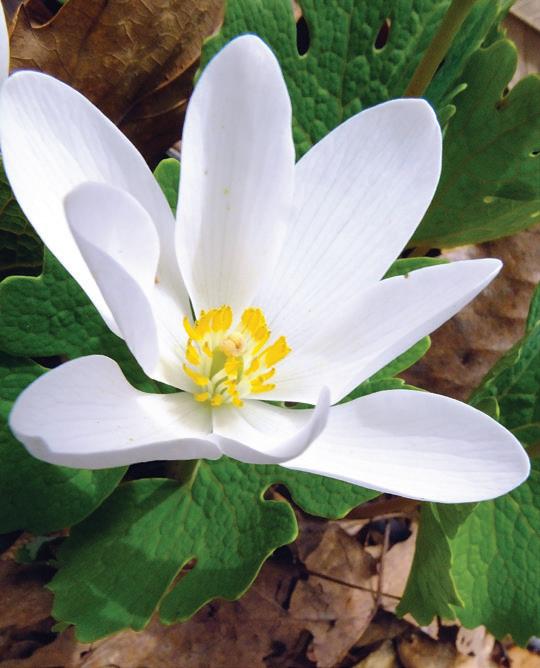
RHODODENDRON CALENDULACEUM – FLAME AZALEA
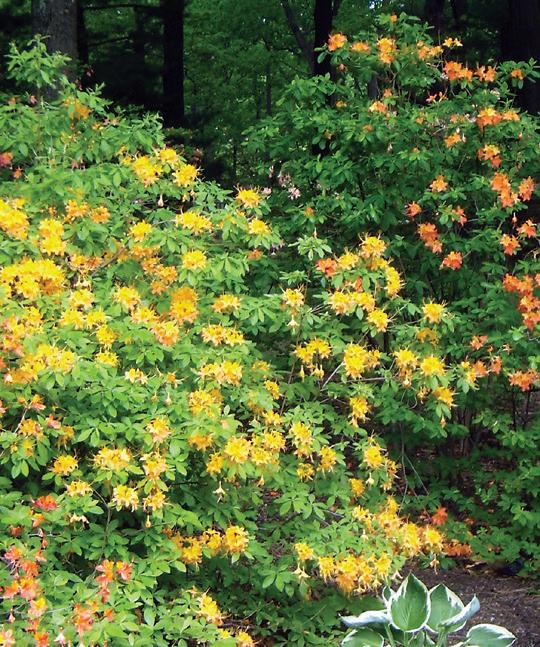
In Ohio: Only in unglaciated southeastern parts on rock outcrops. At HF&G: Holden Arboretum, Wildflower Garden, Rhododendron and Discovery Gardens. Bloom time: May-June, usually late May and early June Growing tips: Provide acidic, moist, yet well drained conditions in half day to full sun.
MALUS CORONARIA – AMERICAN CRABAPPLE, WILD CRABAPPLE
In Ohio: Throughout, fields, fence rows, edges of woodlands. At HF&G: Holden Arboretum, Wildflower Garden Bloom time: Usually early to mid May but infrequently starts in late April. Growing tips: Best in full sun. Eastern red-cedar (Juniperus virginiana) is the alternate host for cedar-apple rust, which can mar its foliage along with apple scab. Protect young trees from deer.
CASTANEA DENTATA – AMERICAN CHESTNUT
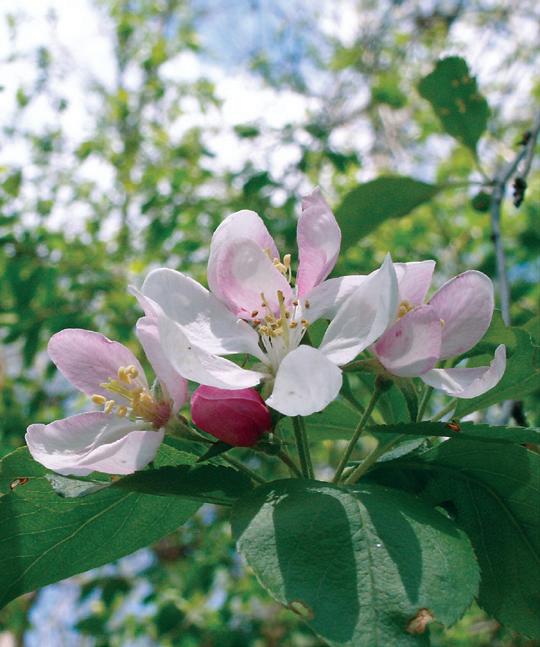
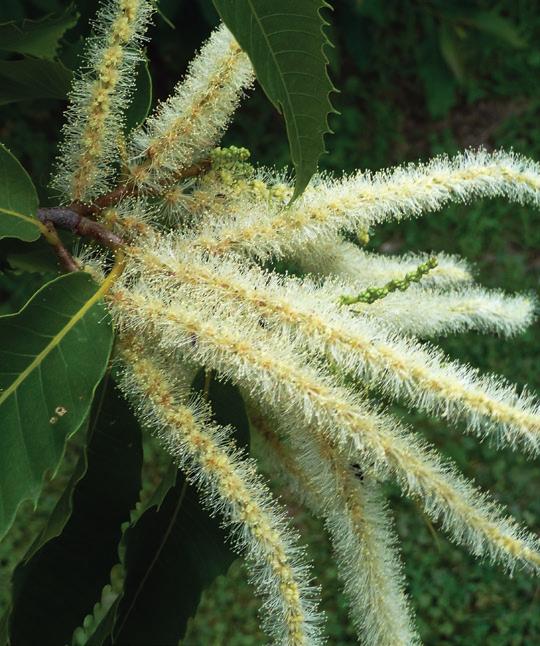
In Ohio: Stump sprouts persist in places, but no large mature trees known due to chestnut blight. At HF&G: Holden Arboretum, by Corning Visitor Center, Wildflower Garden. Bloom time: June-July, usually late June through early July. Growing tips: Join the American Chestnut Society.
IMPATIENS CAPENSIS – COMMON JEWELWEED, TOUCH-ME-NOT
In Ohio: Throughout, floodplain forests, disturbed wetlands, moist woodland edges. At HF&G: Cleveland Botanical Garden, Woodland Garden; Holden Arboretum, Wildflower Garden, Rhododendron Garden. Bloom time: July-September, usually early July through late September. Growing tips: Moist to wet soil, part sun.
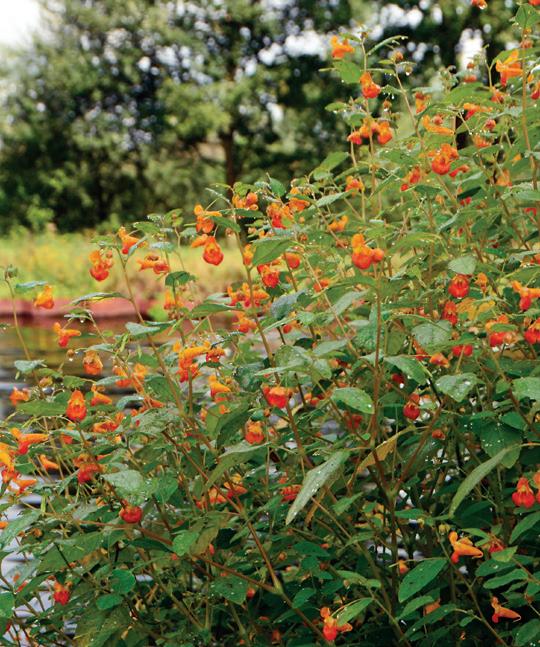
FAGUS GRANDIFOLIA – AMERICAN BEECH
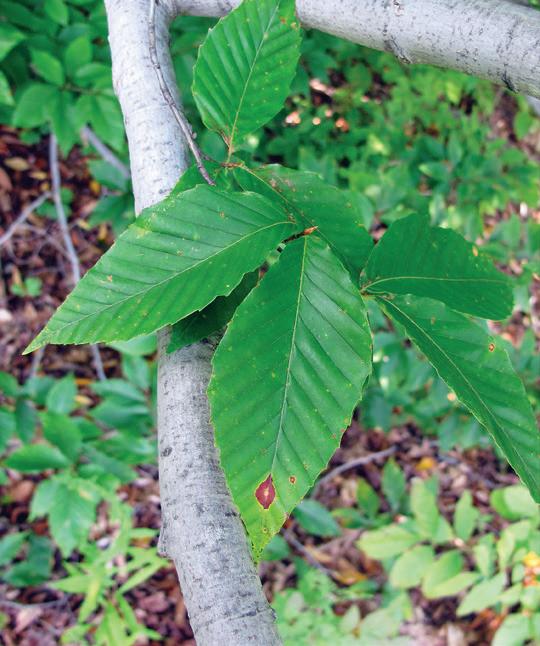
In Ohio: Throughout, especially in rich woodlands. At HF&G: Cleveland Botanical Garden, Woodland Garden; Holden Arboretum, Woodland and Bole Woods trails, Rhododendron Garden, Wildflower Garden. Bloom time: April-May, usually late April through early May. Growing tips: Not for waterlogged soils. Prune out double leaders ASAP.
ASIMINA TRILOBA – PAWPAW
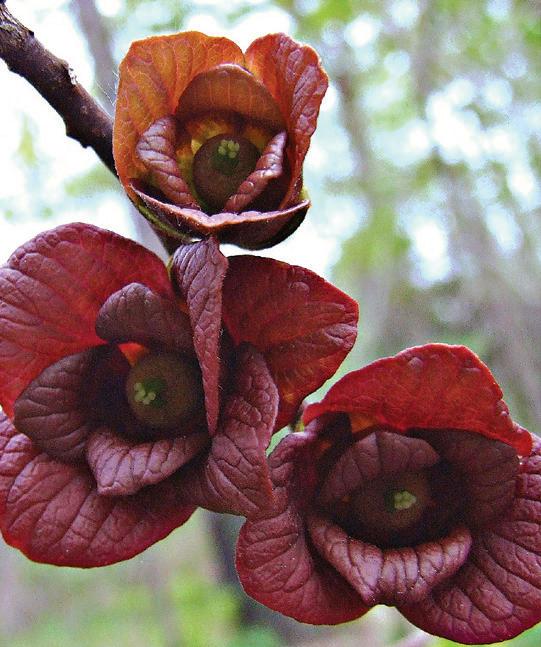
In Ohio: Throughout in understory, woodland edges and creek banks. At HF&G: Cleveland Botanical Garden, Woodland Garden, Children’s Garden; Holden Arboretum, Wildflower Garden, Butterfly Garden, Display Garden. Bloom time: May, occasionally in late April. Growing tips: Needs some shade as a seedling, best in moist bottomlands.
MEET THE STAFF
Ethan Johnson is the Plant Records Curator.He learned to keep records while working for the Arnold Arboretum (1985-89) and Holden Arboretum (1981-82, 1989-present) while volunteering for the International Dendrological Research Institute, Ohio Nursery and Landscape Association Plant Selection Committee and the American Conifer Society. He was the point person when the American Association of Museums accredited Holden Arboretum as the sixth public garden in the U.S. as a museum, has labeled and inventoried Holden Arboretum’s plant collection and has been keeping plant records at Cleveland Botanical Garden since 2015.










